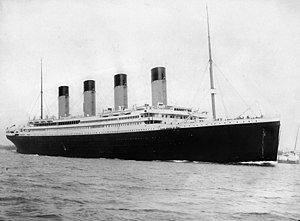Today is
the 100th anniversary of the sinking of the R.M.S. Titanic, a ship
that cost so much and was so carefully constructed that no one even believed
what happened would have been possible. The ship bumped into an iceberg, but
some scientists are now throwing around some different ideas about why exactly
this happened.
One group
of researchers from Texas State University and Sky & Telescope magazine blame
some strange space orbits for the disaster. They say that on that fateful
night, Earth was uncharacteristically close to the Moon and the Sun, closer
than it had been been in more than 1,000 years. The scientists believe this
enhanced the gravitational pulls on the ocean. This could have been the cause
for the record tides that help explain why the Titanic ran into so much ice in
the water, including the iceberg that caused it to sink.
The other
research, carried out by an astronomer and mirage specialist from San Diego
State University claims that the icy waters made it difficult to see icebergs
from the lookout deck and it suggests that this is also why the rescue efforts
took longer because another nearby ship was confused about the Titanic’s
identity. You might have heard of a
mirage as something that happens in the desert. These types of mirages happen
when hot air near the Earth’s surface bends light rays upward, causing lost
travelers to think patches of blue sky are actually pools of water.
Another
kind of mirage happens when cold air bends light rays downward and people see
objects and settings that are actually far away over the horizon. The images
look distorted, sort of like looking into a funhouse mirror.
Both of
these groups of scientists are still performing their studies and looking for
clues that might help us understand once and for all what actually caused
everything that happened on that night 100 years ago.


No comments:
Post a Comment